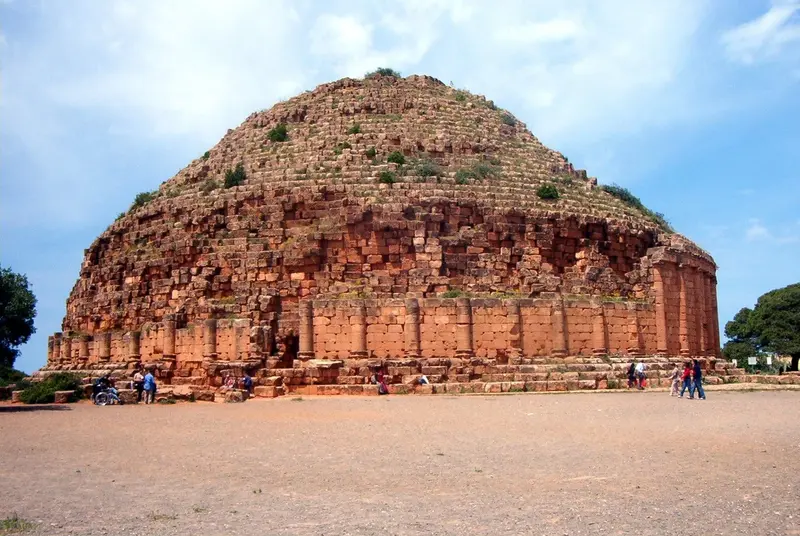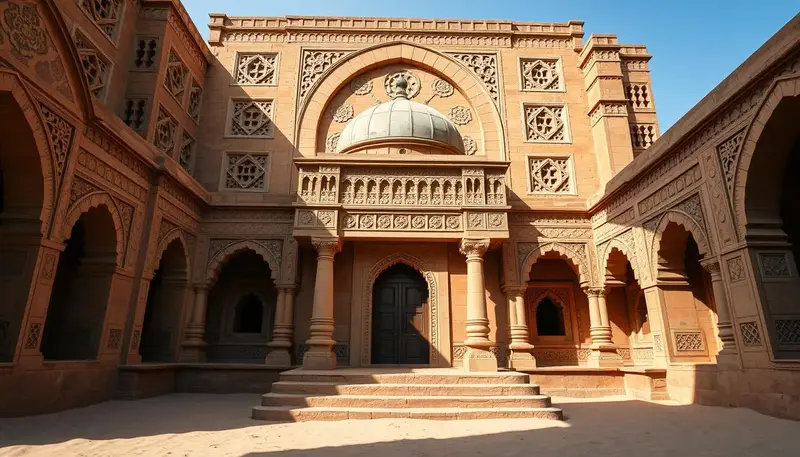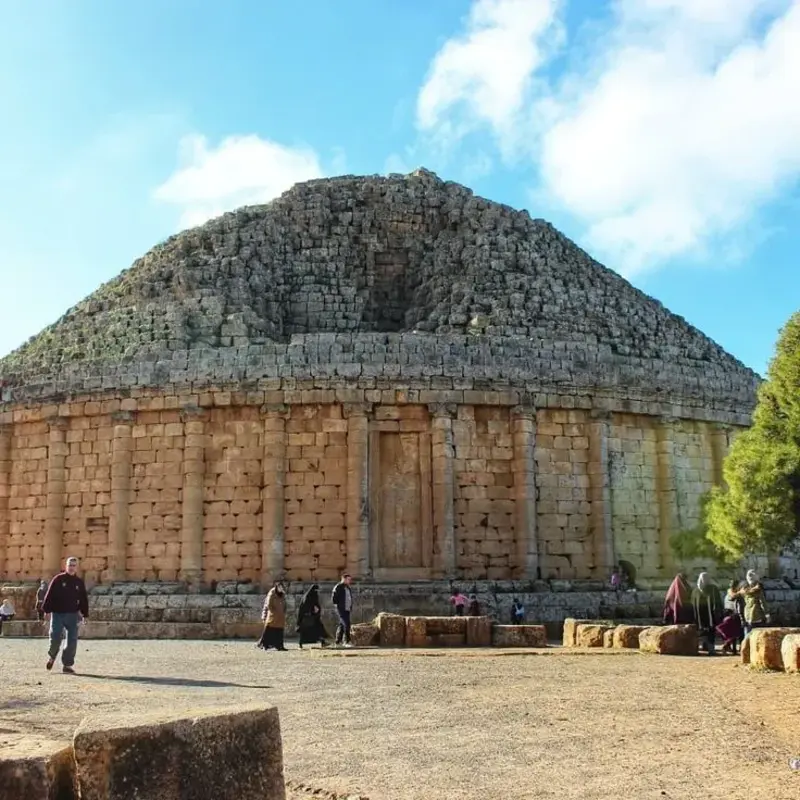The Mauritanian Royal Shrine stands as a profound symbol of Mauritania’s rich history and cultural heritage. This ancient monument, deeply rooted in Islamic tradition, offers a fascinating glimpse into the past, where royal legacies and religious devotion intertwine. In this article, we will journey through the history, architecture, and cultural significance of the Mauritanian Royal Shrine, while also providing practical tips for those who wish to visit this majestic site. Whether you’re a history enthusiast, a traveler, or someone interested in West African heritage, this article will offer valuable insights into one of Mauritania’s most cherished landmarks.
History of the Mauritanian Royal Shrine
The Mauritanian Royal Shrine dates back centuries, originating during a time when the region was a hub of Islamic scholarship and trade. Built as a resting place for Mauritania’s revered royals and scholars, the shrine reflects the profound influence of Islamic architecture and West African artistry. Over the years, the shrine has witnessed the rise and fall of dynasties, standing resilient as a testament to Mauritania’s rich cultural tapestry.
Initially constructed as a simple tomb, the shrine evolved over time, expanding to accommodate the growing significance of the individuals buried there. The shrine began as a simple tomb. Over time, it expanded to reflect the growing significance of those buried there. It has become a key part of Mauritania’s spiritual and cultural identity. Both locals and visitors view it as a place of pilgrimage and reverence.

Architectural Features Mauritanian Royal Shrine
The Mauritanian Royal Shrine is a remarkable example of Islamic architecture fused with traditional West African elements. The structure features intricate geometric patterns, arabesque designs, and calligraphy, which are hallmarks of Islamic art. These designs are not only aesthetically pleasing but also carry deep religious and cultural meanings.
The shrine’s walls are adorned with decorative tile work, featuring vibrant colors that have withstood the test of time. The use of mudbrick, a common material in the region, adds to the shrine’s authenticity. It connects the shrine to the broader architectural heritage of West Africa. Learn about Mughal Architectures.
One of the most striking features of the shrine is its dome. It represents the heavens and, furthermore, serves as a symbolic link between the earthly and the divine. A series of arches and columns support the dome, each crafted with care to highlight the shrine’s sacred significance. An ornate doorway marks the entrance, welcoming visitors into a serene interior where history and spirituality touch every corner.

Cultural Importance Of Mauritanian Royal Shrine
The Mauritanian Royal Shrine is more than just an architectural marvel; it is a vital part of Mauritania’s cultural and religious landscape. The shrine is a focal point for many traditional ceremonies. It also hosts annual pilgrimages, attracting visitors from across the region. These events are a time for communal gathering, reflection, and the reinforcement of cultural values passed down through generations. Learn about Pienza Italy Historical Cultural Heritage Site.
In Mauritanian culture, the shrine is seen as a symbol of continuity and resilience. It embodies the respect and reverence that the Mauritanian people hold for their ancestors and their history. The shrine plays a crucial role in preserving oral traditions. Stories of the royals and scholars buried there pass down through generations, ensuring their legacies remain alive.
The Mauritanian Royal Shrine is also a key site for the study of Islamic scholarship in West Africa. Many of the individuals buried at the shrine were renowned scholars who contributed significantly to the spread of Islamic knowledge in the region. As such, the shrine is a place of learning, where the teachings of these scholars continue to inspire new generations.

Visiting the Royal Shrine
For those looking to explore the Mauritanian Royal Shrine, practical information is essential. The shrine is located in a remote area of Mauritania, making it a unique destination for travelers seeking to experience the country’s rich cultural heritage.
Location and Access:
The Mauritanian Royal Shrine sits in a small village, accessible by road and guided tours. Visitors should hire local guides who know the site’s history and significance, ensuring a more enriching experience. Also Learn about Quebrada De Humahuaca.
When to Visit:
The best time to visit the shrine is during the cooler months, from November to March, when temperatures are more manageable. This period also coincides with several local festivals and ceremonies, providing visitors with an opportunity to witness the shrine in its full cultural context.
Tips for Visitors:
- Dress modestly, as the shrine is a place of religious significance.
- Respect local customs and traditions, particularly during prayer times.
- Photography may be restricted in certain areas, so it’s advisable to ask for permission before taking pictures.
Accommodation:
While there are limited accommodations near the shrine, nearby towns offer a range of options from guesthouses to small hotels. For a more immersive experience, visitors can opt to stay in traditional Mauritanian tents, known as “khaimas,” which are often available through local tour operators.
Efforts For Preservation of Mauritanian Royal Shrine
Preserving the Mauritanian Royal Shrine has been a priority for both the local community and international organizations. The shrine’s remote location has helped protect it from modern encroachments, but it also presents challenges for conservation efforts.
Local Initiatives:
The local community plays a vital role in the upkeep of the Mauritanian Royal Shrine, maintaining the site through traditional methods passed down through generations. Donations from visitors and the broader Mauritanian diaspora support these efforts. They recognize the shrine’s importance as a cultural and religious landmark. Explore The India’s Stone Chariot Hampi .

International Support:
Several international organizations have taken an interest in preserving the Mauritanian Royal Shrine, recognizing its significance as part of the global Islamic heritage. These organizations provide funding and expertise to help with the conservation of the site, ensuring that its architectural and cultural integrity is maintained.
Challenges:
Despite these efforts, the shrine faces several challenges, including environmental factors such as erosion and desertification. Additionally, the lack of modern infrastructure in the area makes it difficult to implement more comprehensive preservation measures. However, ongoing efforts continue to focus on finding sustainable solutions that respect the shrine’s historical significance while ensuring its protection for future generations. One should take solid efforts to save Mauritanian Royal Shrine.
Conclusion
The Mauritanian Royal Shrine is a testament to the rich cultural and religious history of Mauritania. Whether you are a traveler seeking to explore the depths of West African heritage or a history enthusiast interested in the spread of Islamic scholarship, this shrine offers a unique and enriching experience. Plan your visit to the Mauritanian Royal Shrine today and immerse yourself in a journey through time, where history, culture, and spirituality converge.



